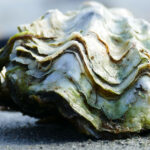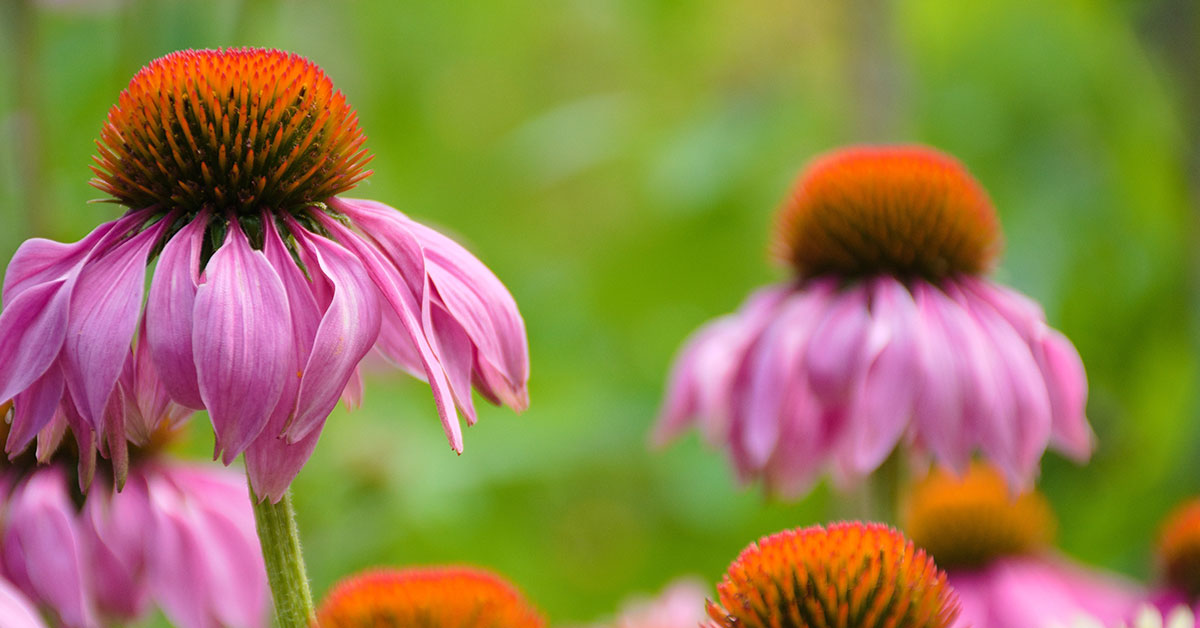
Forget The Bulbs: Plant These 10 Native North American Flowers In The Fall
- Thomas Nelson
- September 30, 2023
- Nature, Sustainable Living
- 0 Comments
As summer makes way for cooler days, fall presents an excellent opportunity for North American gardeners to introduce native flowers to their landscapes. Native plants offer numerous advantages, such as supporting local ecosystems and reducing maintenance needs.
In this article, we’ll discuss the practical aspects of planting native flowers in the fall, featuring specific species suitable for various regions. So, if you’re looking to enhance your garden’s appeal while benefiting the environment, read on for a straightforward guide to autumn planting.
Why choose native flowers?
Choosing native flowers offers a multitude of benefits for the environment, wildlife, and even gardeners. This is why I’ve taken to planting native flowers instead of non-native bulbs in the fall.
- Support Local Ecosystems: Native plants have evolved alongside local wildlife and have intricate relationships with them. By planting native flowers, you’re providing essential resources for native pollinators, birds, and other wildlife.
- Water Savings: Native plants are adapted to the local climate and soil. This means they generally require less water than non-natives once they are established, saving a valuable resource and reducing your water bill.
- Fewer Pesticides and Fertilizers: Because they’ve adapted to local conditions and pests, native plants often require fewer chemical interventions, reducing the risk of pesticide run-off and promoting a healthier environment.
- Soil Health: Native plants often have deep root systems compared to non-natives, which can prevent soil erosion, improve water absorption, and enhance soil health.
- Promote Biodiversity: Native plants support a diverse range of wildlife, from beneficial insects to birds. This can help bolster biodiversity, which in turn creates a more resilient and balanced ecosystem.
- Combat Invasive Species: Planting native flowers can help crowd out invasive plants that might otherwise take over, which can be detrimental to local ecosystems.
- Low Maintenance: Once established, native plants typically require less care than non-native species. They’re naturally adapted to cope with local pests, diseases, and climate conditions.
- Cultural and Historical Significance: Native plants can have cultural, historical, and even medicinal significance to an area or its indigenous peoples.
- Natural Beauty: Native flowers and plants offer a sense of place, reflecting the natural beauty of the region.
- Climate Resilience: Native plants are generally more resilient to local weather fluctuations and extremes, making them a sustainable choice in the face of climate change.
- Economic Benefits: Reducing the need for water, fertilizers, and pesticides can lead to cost savings. Additionally, promoting native plants can support local nurseries and conservation initiatives.
- Education and Connection: Growing native flowers can provide an educational opportunity, fostering a deeper connection with the local environment and understanding of the importance of conservation.
Choosing native flowers aligns gardening and landscaping practices with ecological principles, promoting a harmonious balance between human needs and the health of the natural world. It’s a decision that prioritizes sustainability, conservation, and respect for nature.
10 flowers native to North America that can be planted in the fall
Planting native flowers is a great way to support local ecosystems and wildlife. In North America, there are several flowers that can be planted in the fall to either bloom in late fall or be prepared for an early spring emergence. Here are some native flowers to consider:
Goldenrod (Solidago spp.)
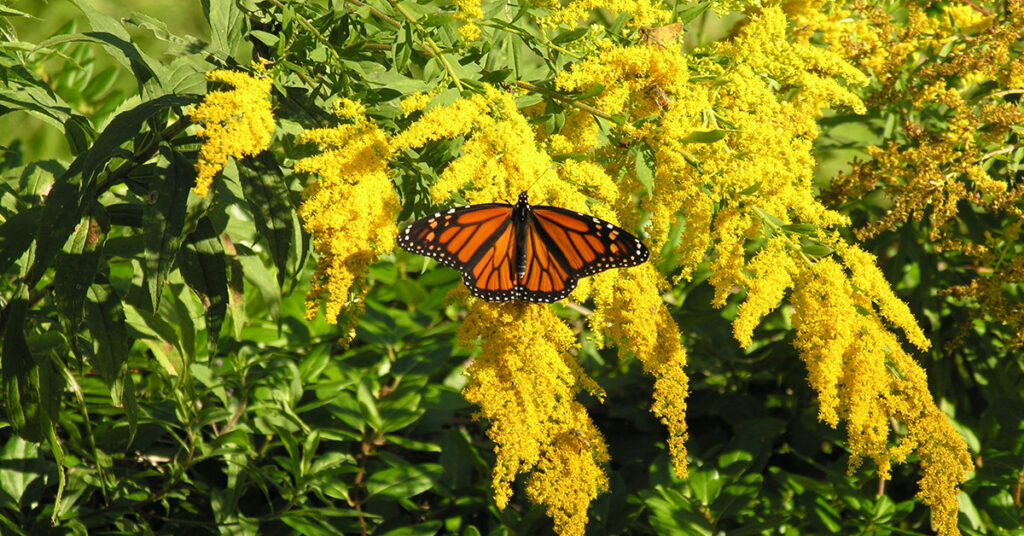
Planting Goldenrod in the fall is a strategic move for any avid gardener. As the days gradually grow shorter and temperatures begin to cool, this native perennial shines as a late-season superstar. Goldenrod, with its vibrant yellow plumes, not only adds a burst of color to your garden but also serves as a vital source of nectar for pollinators, like bees and butterflies, before winter sets in. To get started, choose a sunny spot in your garden with well-drained soil.
Dig a hole slightly larger than the root ball of your Goldenrod plant and place it in the ground at the same depth as it was in its container. Water it thoroughly, and don’t forget to mulch around the base to conserve moisture and protect it from harsh winter conditions. With proper care, your fall-planted Goldenrod will flourish and be a beacon of beauty and life in your garden.
- Native Range: Throughout North America, with different species adapted to various regions.
- Notes: Bright yellow flowers that attract pollinators. Blooms in late summer to fall.
New England Aster (Symphyotrichum novae-angliae)

Planting New England Aster in the fall is a wise choice for gardeners seeking to extend the season of blooms and support native wildlife. This resilient perennial bursts into a riot of purple blossoms just when most other flowers are fading. To ensure its success, select a sunny location with well-draining soil.
When planting, make sure the root ball is level with the surrounding soil and give it a good soaking. New England Aster not only provides late-season nectar for bees and butterflies but also adds a touch of elegance to your autumn landscape. With a little care, this fall-planted beauty will reward you with its vibrant display year after year.
- Native Range: Eastern North America, from Eastern Canada down to the Carolinas and westward as far as the Dakotas.
- Notes: Produces purple daisy-like flowers in the fall and is excellent for late-season pollinators.
Black-Eyed Susan (Rudbeckia hirta)
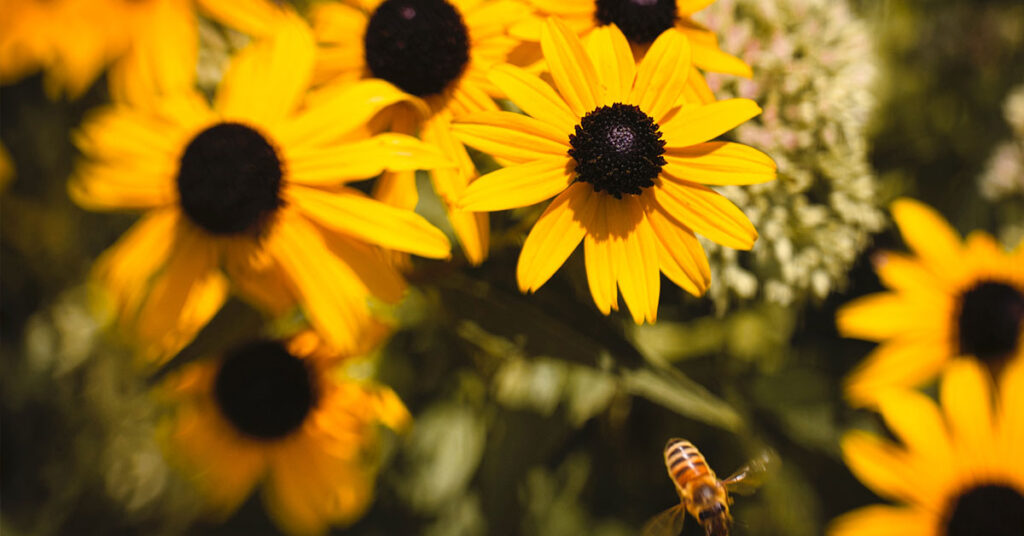
Planting Black-Eyed Susans in the fall can be a rewarding addition to your garden. These cheerful, yellow daisy-like flowers brighten up the late-season landscape with their vibrant blooms and dark centers. Choose a sunny spot with well-drained soil for optimal growth. When planting, ensure that the root ball is at ground level and water thoroughly.
Black-Eyed Susans are known for their resilience and ability to attract pollinators like bees and butterflies, making them a valuable addition to any garden. By planting them in the fall, you give them a head start for the following spring, where they will continue to bring joy and color to your outdoor space.
- Native Range: Throughout the continental U.S., except the far west coast.
- Notes: Bright yellow petals with dark centers, blooming from summer to first frost.
Purple Coneflower (Echinacea purpurea)

Planting Purple Coneflower in the fall is a thoughtful choice for gardeners seeking to enhance their gardens with enduring beauty and pollinator-friendly blooms. These striking perennials, with their distinctive purplish-pink petals and raised, cone-like centers, are a true highlight of the late-season garden.
Select a sunny location with well-draining soil for optimal growth. When planting, ensure the root ball is level with the surrounding soil and water thoroughly to establish strong roots. Purple Coneflowers not only add a pop of color but also serve as a vital food source for bees, butterflies, and other pollinators. By planting them in the fall, you’re setting the stage for a spectacular display of wildflower charm in the seasons to come.
- Native Range: Central to Eastern U.S., from Texas to Michigan.
- Notes: Known for their purple flowers and prominent centers; attracts pollinators.
Common Milkweed (Asclepias syriaca)

Planting Common Milkweed in the fall is a wise choice for gardeners looking to support monarch butterflies and other pollinators while adding a touch of natural beauty to their landscape. Common Milkweed, with its clusters of pinkish-purple flowers, is not only a hardy perennial but also an essential host plant for monarch butterfly larvae.
Choose a sunny location with well-draining soil for your milkweed. Plant it at the same depth as it was in its container and water thoroughly. By planting Common Milkweed in the fall, you give it time to establish strong roots before the following spring, ensuring a robust and thriving habitat for these iconic butterflies. Your garden will be buzzing with life and color in the seasons ahead.
- Native Range: Eastern and Central U.S., from the Dakotas to Maine and down to Alabama.
- Notes: Essential for monarch butterflies, offering both food and breeding grounds.
Eastern Columbine (Aquilegia canadensis)

Planting Eastern Columbine in the fall is a thoughtful choice for gardeners who appreciate the delicate charm of this native wildflower. With its unique, nodding, bell-shaped flowers in shades of red and yellow, Eastern Columbine adds a touch of whimsy to any garden. To get started, choose a partially shaded to sunny spot with well-draining soil.
Plant the columbine at the same depth as it was in its container and give it a good watering. By planting in the fall, you allow this perennial to establish its roots before the following spring, ensuring a graceful and colorful addition to your garden that will enchant both you and any passing pollinators.
- Native Range: Eastern North America, from Florida to Canada.
- Notes: Red and yellow flowers that attract hummingbirds.
Blue Wild Indigo (Baptisia australis)

Planting Blue Wild Indigo in the fall is a strategic choice for gardeners seeking a unique and striking addition to their landscape. With its tall spires of indigo-blue pea-like flowers and attractive foliage, Blue Wild Indigo makes a bold statement in any garden. Select a sunny spot with well-draining soil for optimal growth.
When planting, make sure the root ball is level with the surrounding soil and water thoroughly. By choosing to plant in the fall, you provide this native perennial ample time to establish its roots before the next growing season, ensuring a robust and visually captivating presence in your garden. Blue Wild Indigo is not only a visual delight but also an important plant for supporting local ecosystems.
- Native Range: Central to Eastern U.S., primarily in the Midwest and South.
- Notes: Produces blue flowers in early to mid-summer.
Blazing Star (Liatris spicata)
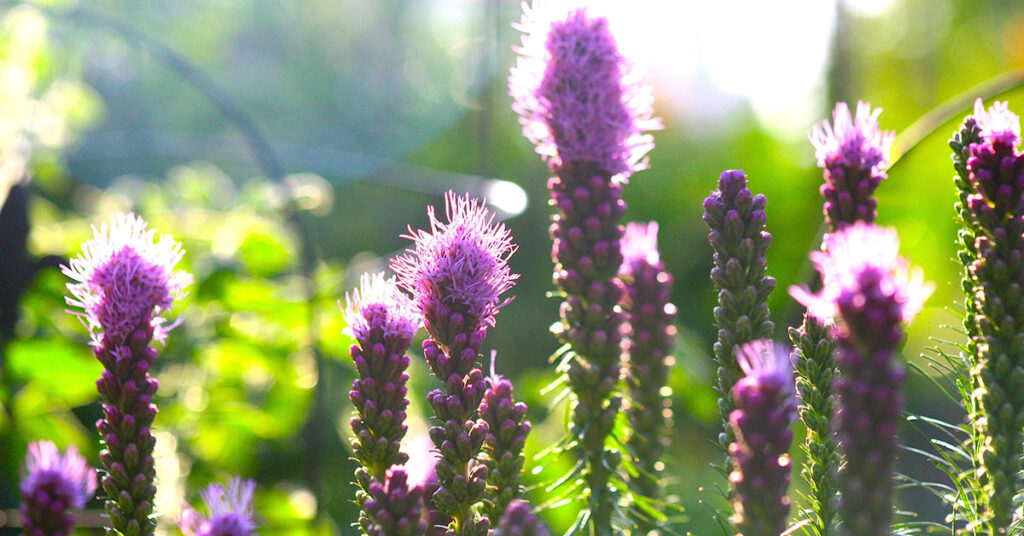
Planting Blazing Star in the fall is a strategic choice for gardeners looking to bring vertical interest and vibrant color to their late-season garden. With its tall spikes of purple, pink, or white blossoms, Blazing Star stands out as a stunning native perennial. To ensure its success, choose a sunny location with well-draining soil.
Plant it at the same depth as it was in its container and water thoroughly. By planting in the fall, you give Blazing Star the opportunity to establish strong roots before the next growing season, resulting in a spectacular display of blooms that will dazzle both you and pollinators like butterflies and bees. This tall and elegant plant is a valuable addition to any garden.
- Native Range: Eastern U.S., from Florida up to Maine and westward to Texas.
- Notes: Purple spikes of flowers that stand tall and attract butterflies.
Foxglove Beardtongue (Penstemon digitalis)
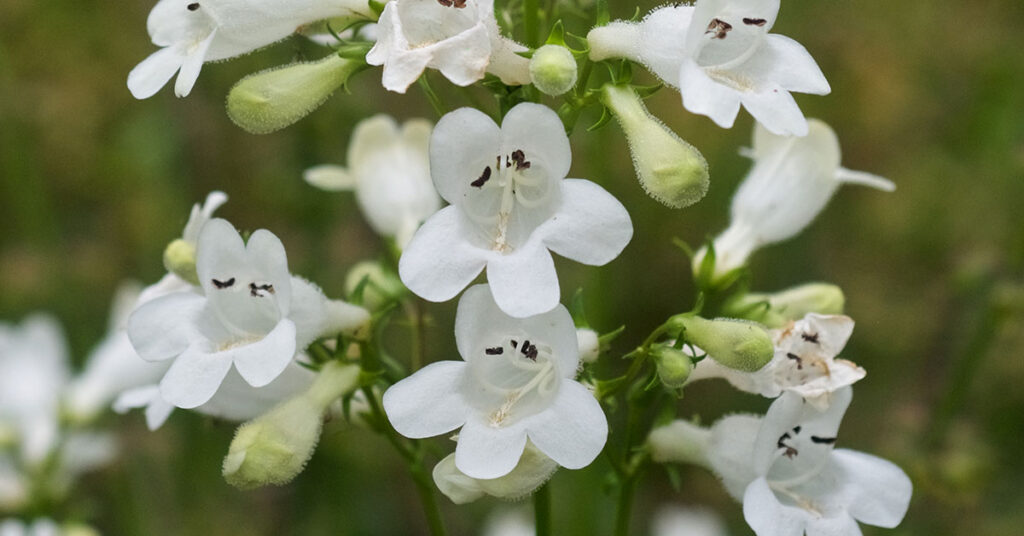
Planting Foxglove Beardtongue in the fall is a wise choice for gardeners seeking a unique and elegant addition to their landscape. With its tall spikes of tubular, pink to lavender flowers and distinctive bearded stamens, Foxglove Beardtongue adds a touch of sophistication to any garden. Choose a sunny to partially shaded spot with well-draining soil for optimal growth. When planting, ensure the root ball is level with the surrounding soil and water thoroughly.
By selecting the fall planting season, you provide this native perennial ample time to establish its roots before the next growing season, resulting in a robust and visually captivating presence in your garden. Foxglove Beardtongue not only offers aesthetic charm but also attracts pollinators like hummingbirds, making it a valuable addition to any garden ecosystem.
- Native Range: Eastern and Central U.S.
- Notes: White tubular flowers that bloom in early summer.
Wild Bergamot (Monarda fistulosa)

Planting Wild Bergamot in the fall is a strategic choice for gardeners who appreciate the beauty of native wildflowers and wish to support pollinators. With its striking lavender to pinkish-purple blooms and fragrant foliage, Wild Bergamot is a standout in any garden. To ensure its success, choose a sunny location with well-drained soil.
Plant it at the same depth as it was in its container and water thoroughly. By opting for fall planting, you allow this perennial ample time to establish its roots before the following growing season. This not only ensures a robust and visually pleasing addition to your garden but also provides a valuable nectar source for bees, butterflies, and other pollinators. Wild Bergamot is a win-win for both your garden’s aesthetics and its ecological impact.
- Native Range: Throughout most of the U.S. and Canada, excluding the westernmost states and provinces.
- Notes: Lavender flowers that are a favorite among bees and butterflies.
When choosing plants, it’s a good idea to consider your specific location and its microclimates. Plants that are native to your specific region will be best adapted to local soil types, precipitation levels, temperatures, and native pollinators. It’s always a good approach to consult with a local nursery or extension service for the best native plant recommendations for your area.

